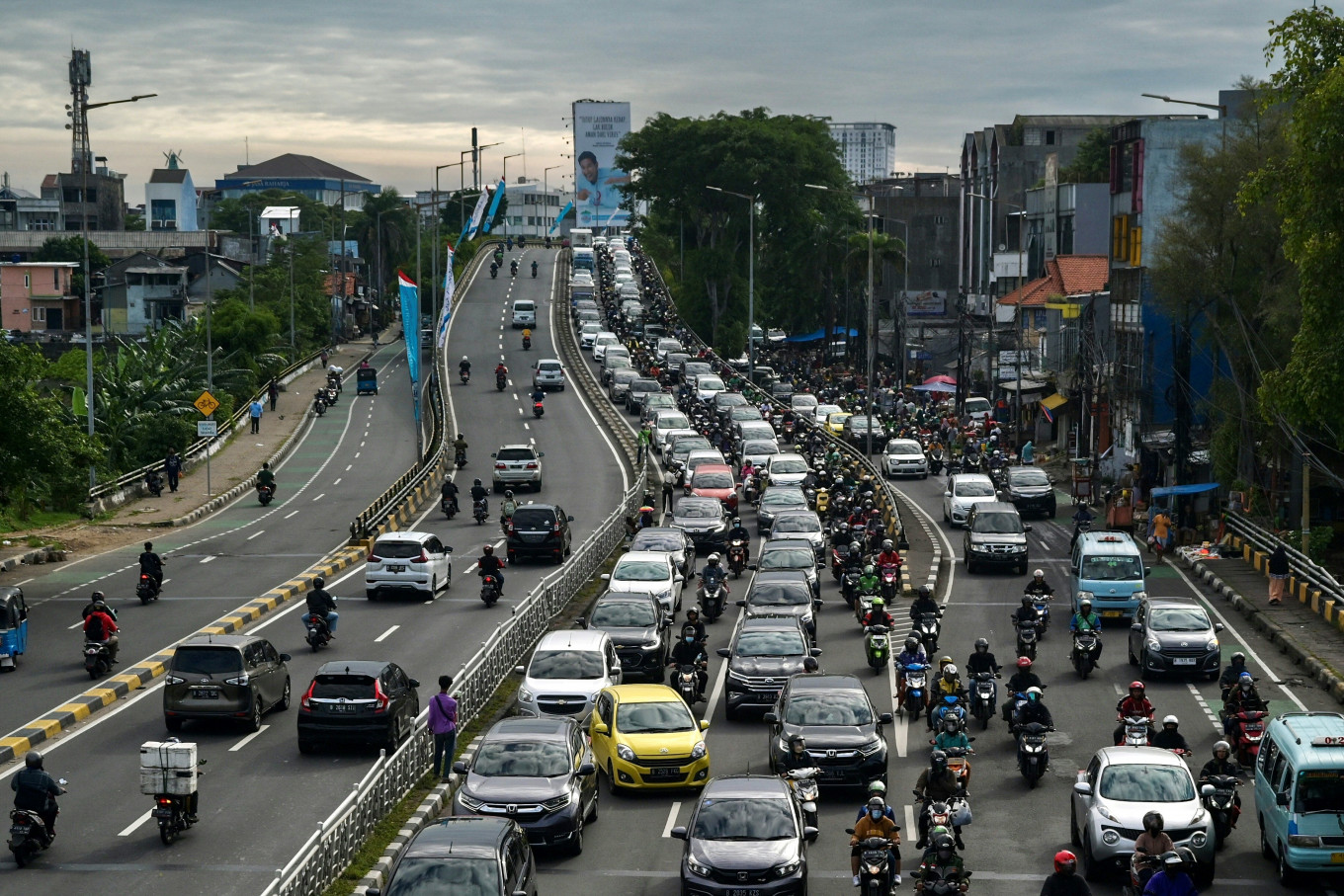Popular Reads
Top Results
Can't find what you're looking for?
View all search resultsPopular Reads
Top Results
Can't find what you're looking for?
View all search resultsEvolution in global value chains key to a green and resilient ASEAN
To counter this new wave of challenges, ASEAN GVCs should evolve to become more green, enable firms to use greater technology and train workers to shift to higher skills.
Change text size
Gift Premium Articles
to Anyone
A
SEAN has again proven itself to be among the world’s most resilient economic groupings. Relying on strong exports, sound macroeconomic policies and effective buffers, the economies of ASEAN recovered rapidly from the devastating impacts of COVID-19, recording growth of 5.6 percent in 2022 after falling to 3.2 percent in 2020.
But we cannot view ASEAN’s relative strength in the past three years as reason for complacency. The pandemic and other shocks like the Russian invasion of Ukraine, geopolitical tensions and climate change exposed weaknesses in ASEAN’s global value chains (GVCs). Ignoring these risks could reduce the immense benefits ASEAN has gained from global trade and the resilience it continues to build.
Historically, ASEAN has always rode out crises with an appropriate mix of good policy and market reforms, increasing external trade and foreign direct investment. GVC linkages, the multicountry cross-border production networks that bring a product or service from conception to market, expanded and deepened as multinational corporations and offshore suppliers flocked to the region’s manufacturing and assembly base, with its young and vibrant workers and better access to technology, knowledge and innovation.
In fact, Southeast Asia’s GVC linkages weathered the pandemic better than expected. Agile businesses quickly shifted from “just-in-time” to “just-in-case” inventories and diversified suppliers and delivery routes. For example, many manufacturers in the region repurposed their plants to produce personal protective equipment and disinfectants to respond to their rising demand.
By 2021, GVC participation, the sum of backward and forward linkages, in the region had rebounded, topping 2019 levels. Machinery GVCs surged, followed by medium- and high-tech manufacturing and the business services most integrated into GVCs. Government stimulus helped, along with easing mobility restrictions, strong consumer demand, surging e-commerce and increased trade with the +3, the People’s Republic of China, the Republic of Korea and Japan.
GVC jobs also played a strong role. More than one in four Southeast Asian jobs are linked to GVCs. In 2021, 76 million workers in nine Southeast Asian economies held GVC-related jobs, 7 million more than in 2020 when COVID-19 struck. Many cite GVCs as a major factor driving the region’s 2021 recovery.
However, the GVC pandemic response also altered the region’s competitive advantage based on cheap labor. This bedrock of GVC production needs to evolve to include the new skills needed in an increasingly technology-driven and environmentally sensitive world.
During the pandemic, consumers and businesses scrambled to overcome restrictions by adopting digital technologies and e-commerce. And these accelerated shifts will continue to transform GVC production and marketing.
Reforms must therefore be paired with creativity, soft skills and new business models, especially digitalization. ASEAN needs to transform itself into a technology and knowledge hub.
It can only do this, however, if it creates a workforce with the right skill set. Governments urgently need comprehensive innovation and training policies. These should balance smart regulation, high-quality digital infrastructure, green growth and investment across a broad range of skills development to allow workers to shift to higher value-added GVC jobs.
Another challenge is to ensure the recovery and future growth is green. GVCs must adapt and adjust to ensure they are environmentally sustainable. As a global factory for the world, more trade and deeper GVCs mean greater emissions and environmental damage. The region emits more greenhouse gases during production than most similar-sized regions.
Authorities need to consider climate goals in every policy, plan and project. Investments in renewable energy and improved efficiency in linking power to consumption should be mandatory. Value chains should be simplified and shortened to promote economic, social and environmental objectives.
Effective incentives are needed to eliminate fossil fuel subsidies, set realistic carbon prices, plug carbon leakage, stamp energy labels on imported goods and reduce trading costs for climate-smart and environment-friendly goods. Reforms are also needed to promote the application of digital technology in trade and transportation systems to mitigate their carbon footprints.
Recent geopolitical tensions and a string of external shocks also present new challenges to ASEAN and its value chains. The Russian invasion of Ukraine continues to disrupt energy and commodity prices. Rising barriers to global and regional market access are shaping trade relations based on projecting power and fragmenting trade. And stiffer competition is fueling the race to access natural resources, intermediate inputs and commodities.
Geopolitical tensions in turn are drastically changing the type and tone of trade and investment policies among major trading partners. Regrettably, support for a more open, rules-based system has suffered.
All these could unleash changes that disrupt Southeast Asia’s GVC linkages and progress.
To counter this new wave of challenges, ASEAN GVCs should evolve to become more green, enable firms to use greater technology and train workers to shift to higher skills. ASEAN should better leverage intra-regional cooperation to seize new opportunities for regional and global integration. And it should keep borders open for trade, the only proven way to diversify and boost access to products, services and business partners.
GVCs have helped ASEAN bring greater prosperity to its people. By embracing the right reforms, they will continue to do so.
***
Ramesh Subramaniam is the director general of the Southeast Asia Department of the Asian Development Bank (ADB). James Villafuerte is principal economist of the Southeast Asia Department of ADB.











